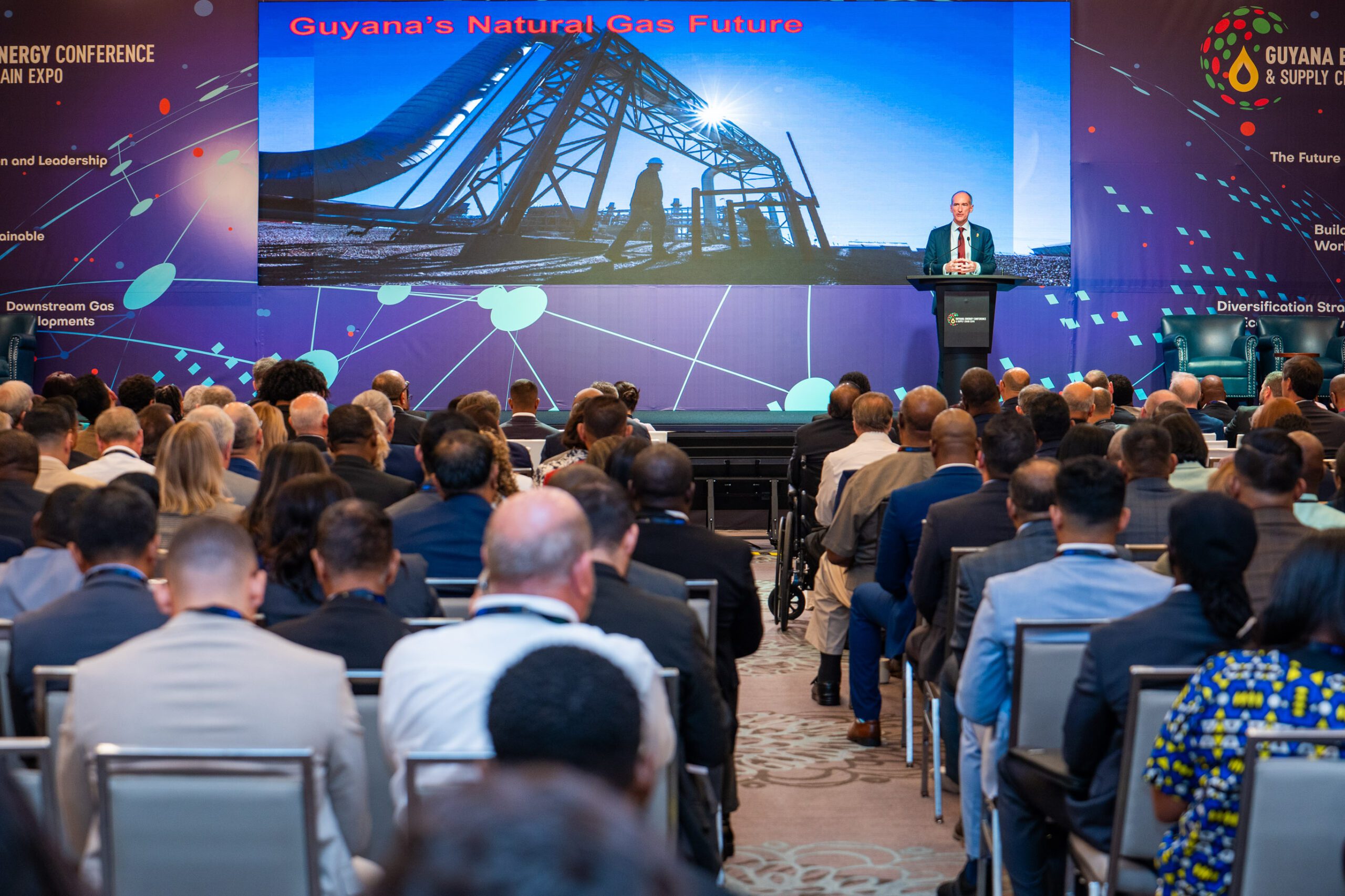Interest in the development of gas resources offshore Guyana is ramping up as evidenced by the day two presentations at the Guyana Energy Conference and Supply Chain Expo. The conversation shifted to how the new oil producing country can aptly utilize its growing gas resources and ExxonMobil – operator of the Stabroek Block – announced big ideas in a riveting presentation.
President of ExxonMobil Guyana, Alistair Routledge, said the country’s gas development plans extend beyond Wales, aiming to harness natural gas for an Alumina Plant, Data Centres, and a Fertilizer Plant.
“Well, why not use gas in Guyana as part of distributed data centers and AI around the world? So that’s on our radar. And of course, fertilizer…there could be a fertilizer plant [so] you could supply the fertilizer needs of Guyana, Northern Brazil, CARICOM. Within this region, there are significantly higher needs for [it] and so, we foresee the development of additional fertilizer,” Routledge said.
Significant non-associated gas finds have been made in the southeastern portion of the Stabroek Block. ExxonMobil is now assessing the data from the appraisal works it recently completed to lay out a comprehensive gas use plan. And all this is being done with several new developments in tow.
But gas production differs from oil. Routledge was keen to note that to produce and even market gas is way more expensive. Nevertheless, the company and its partners are in planning mode.
Anchoring the vast gas resources are the Longtail and Haimara discoveries. Longtail has already been identified as the 8th development after Hammerhead.
Exxon has also completed the pipeline for Guyana’s Gas-to-Energy project. Gas is expected to flow from the Liza field through it, to shore at a new rate of 120 million cubic feet per day (cf/d). The gas would be received by an integrated gas processing facility at Wales, West Bank Demerara, including a 300-megawatt (MW) power plant and a natural gas liquids (NGL) separation plant.



